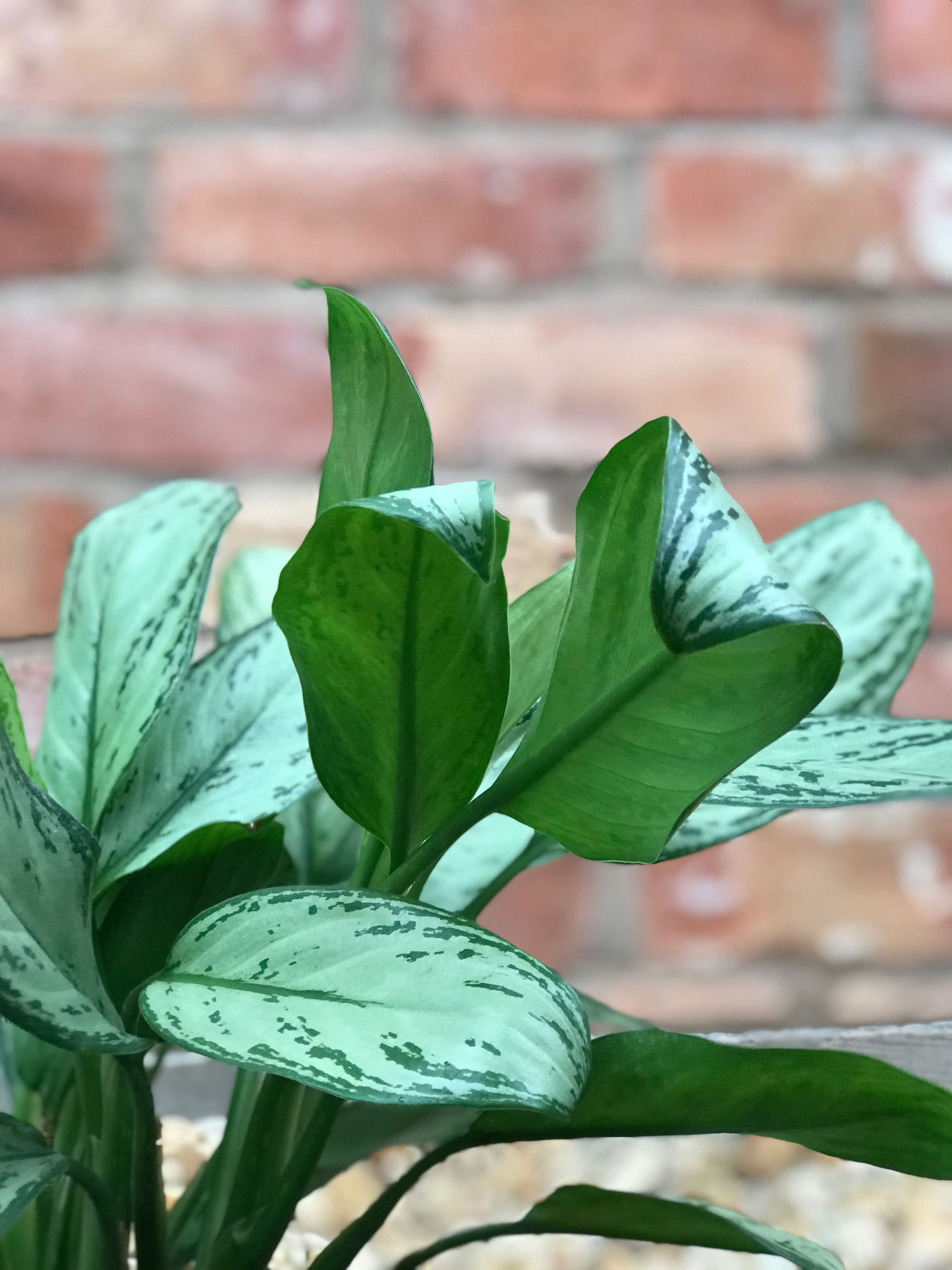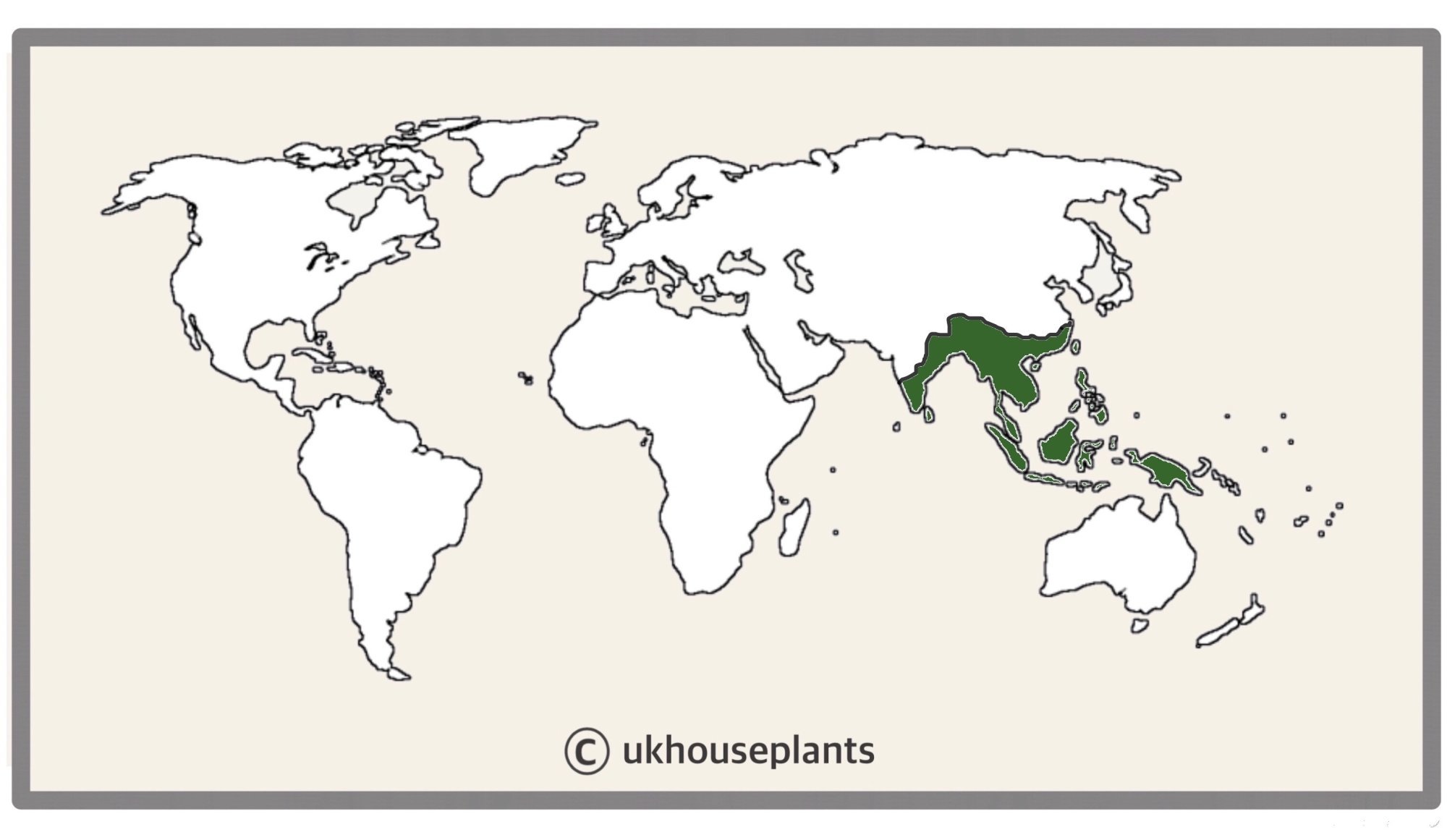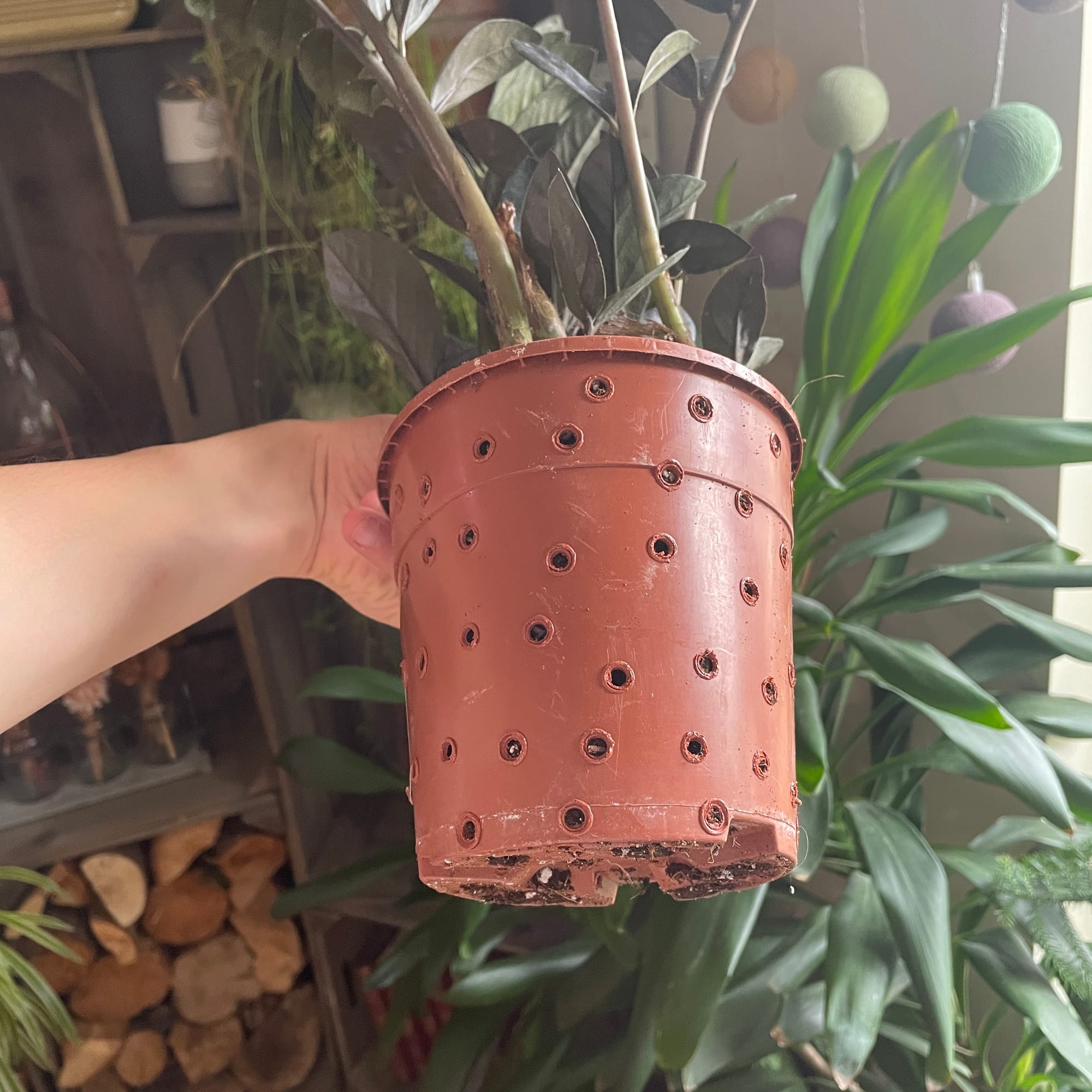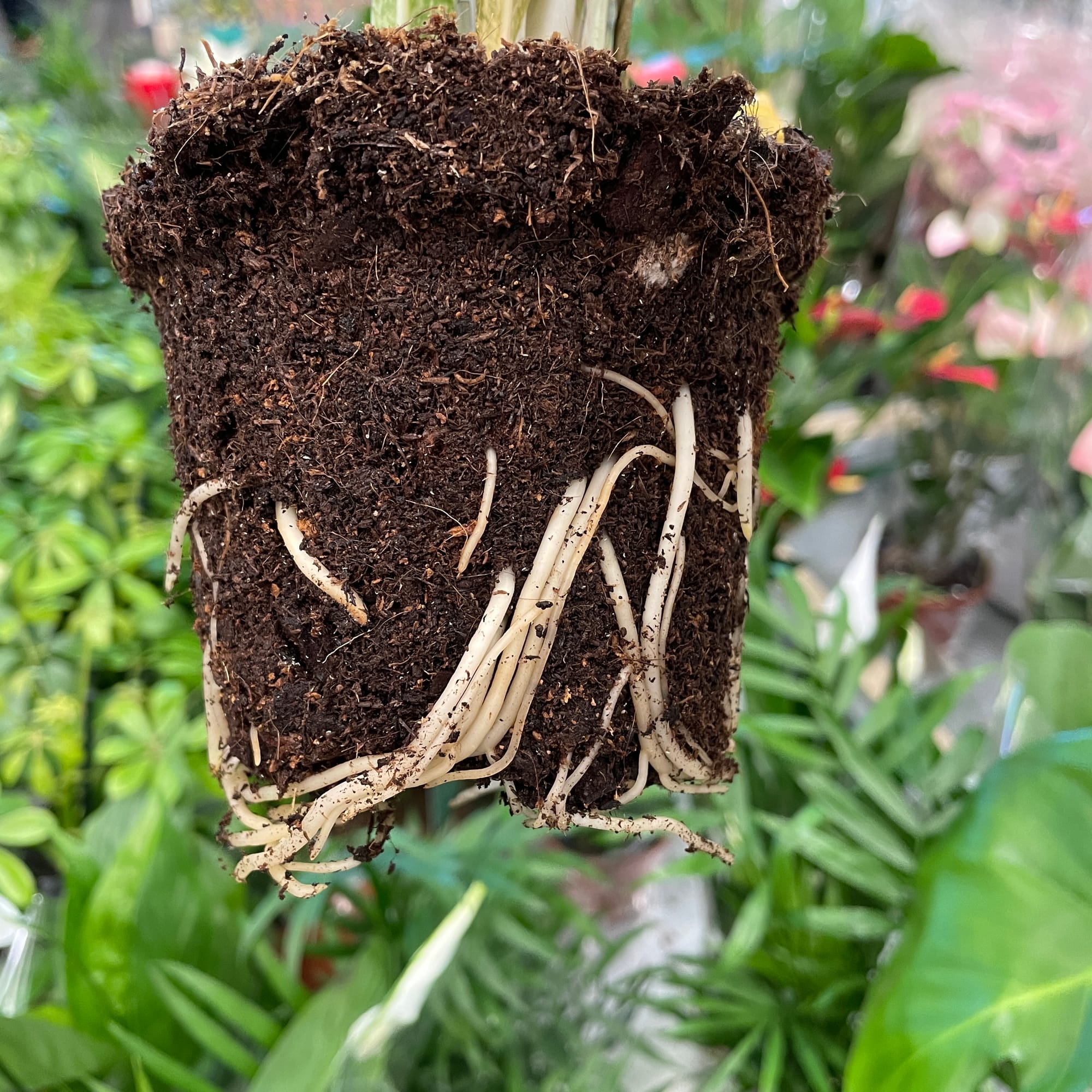
Aglaonema modestum 'Silver Queen'
Contents
- Top Tips
- Location, Water, Humidity & Fertilisation
- Common Issues
- Origins, Temperature, Propagation, Repotting & Toxicity.
Need the answer to a specific plant query? Book a 1-to-1 video call with THE HOUSEPLANT DOCTOR™, the website's friendly author, to overcome and address your niggling problem! Available on iMessage, WhatsApp, Facebook Messenger & more.
Top Tips & Info
- Care Difficulty - Easy
- Bright indirect light is best, avoiding prolonged exposure to the sun, especially in the spring and summer.
- Keep the soil evenly moist, allowing the top third to dry out in between waters. Avoid prolonged droughts due to the heightened chance of yellowing leaves and weakened growth.
- Introduce a humidity tray if you live in a dry climate (below 45%) or have the heaters switched on.
- Fertilise using a 'Houseplant' labelled feed every four waters in the spring and summer, reducing this to every six in the colder months.
- In spring, repot every two years with 'Houseplant' compost. Water the plant 24hrs beforehand to reduce the risk of damaging the root hairs (Transplant Shock).
Location & Light - 🔸🔸
Chinese Evergreens can withstand all ranges of indirect light, meaning that most locations in a home are accepted, including excessively dark settings. Avoid situating one in a spot that receives intense sunlight for more than an hour per day as it’ll quickly lead to sun-scorch and bleached leaves. Variegated specimens could lose their patterns if under-exposed to the natural light, whereas sun-filled conditions will lead to exaggerated variegations with little green pigmentation.
Water - 🔸🔸
Allow the top third of the soil to dry out in between waters, reducing this further in the autumn and winter. Specimens situated in darker areas must be watered far less than those grown in brighter spots to combat the heightened chance of mouldy soil and over-watering. Under-watering symptoms include dry leaf-edges, yellowed foliage and slowed growth, which is commonly caused by too much heat or light and forgetfulness. Over-watering symptoms include yellowing lower leaves, stunted growth, compost mould and stem collapse. If you feel that root rot has taken over, be sure to evaluate the soil health and click on this link for more information.
Humidity - 🔸🔸🔸
Although average room humidity is excellent for Chinese Evergreens, keep a close eye out for browning leaf tips that may indicate too dry air. Gently hose its foliage once a month to reduce the number of dust particles resting on its foliage.
Fertilisation - 🔸
Fertilise every four waters during the growing period before reducing this to every six in the autumn & winter. Although an 'All-Purpose' fertiliser will still do the job, we'd recommend using a specific 'Houseplant' labelled fertiliser as it'll support the vital thirteen nutrients that this species will need to grow.

Although its variegations are stunning, your Chinese Evergreen may have issues performing photosynthesis due limited chlorophyll in its leaves. We recommend growing yours in sunless window or under a grow light for optimum health. Remember: light energy is converted into plant energy that can be invested in new roots, leaves and potential flowers.
Common Issues with Chinese Evergreens
An array of simultaneous cultivation issues will increase the chance of developing yellowed leaf-sections with browned halos - see image below for visual reference. Firstly, the location may be too dark, with its compost staying too saturated in-between waters; if mould is growing across the soil, this is usually a bad sign. Further, you're potentially using too cold water or tap water that hasn't been allowed to sit for 24hrs. This period of rest will not only bunk-up its temperature, but the harsh chemicals used to preserve water hygiene (fluoride & chloride) will begin to settle after a few hours. If possible, use fresh bottled water from a shop or supermarket to prevent further chemical burns. The final culprit might be lack of fertilisation, with regular feeds being paramount for long-lasting, healthy leaves. If the specimen hasn't been nourished in over two months, it'll begin to show signs of nutrient deficiencies seen in this article.
If this common problem has occurred with your specimen, remove the affected leaves (not areas) and improve the growing conditions considerably. Fertilise regularly with lukewarm water and be sure to allow the top third to dry out in between hydrations. Its new growth should be problem-free, but if you'd like to speak to ukhouseplants for more advice, don't be afraid to book a 1-to-1 call with our writer, THE HOUSEPLANT DOCTOR™.
Yellowing lower leaves (closest to soil) are a clear sign of over-watering or root rot, often caused by too little light or low temperatures. Although they can do well in darker locations, the frequency of irrigations must be reduced to counteract the chance of root rot. People don't realise that a plant's root system needs access to oxygen too; when soil is watered, the air will travel upwards and out of the potting mix. A lack of accessible oxygen for the roots will cause them to subsequently breakdown over the oncoming days. Click on this link to learn more about root rot and how to address it, and always feel the pot's weight for confirmation (heavy pot = adequate soil moisture). Scroll down to the last image to see an example of a healthy root system.
Always use lukewarm water, and if you choose to use tap water, allow it to stand for at least 24hrs before application. They tend to be quite sensitive to temperature change, so pouring cold tap water immediately into the pot will not only add fluoride into the soil, but it could even cause yellowed leaf-edges over time.
Brown crispy new-growth that's become deformed is the product of over-exposure to the sun and dehydration. As mentioned previously, Chinese Evergreens will grow best in bright, indirect light with regular waters. Remove the affected areas and improve the growing conditions to counteract this issue occurring again. In some cases, Spider Mites could be the culprit for the abnormality, with small, near-transparent critters slowly extracting the chlorophyll out of the leaves. Have a check under the rest of the foliage, most notably along the midrib, for small webs and gritty yellow bumps. Click here to read our article about the eradicating Spider Mites, along with some extra tips that you may not find elsewhere!
A loss of variegations is caused by too little light. Although they're an excellent choice for shady locations, it'll come at the cost of its variegations. Move the plant into a brighter area with minimal direct sunlight to allow the variegations to appear on the new growth. If you aren't entirely displeased about the loss, simply skip this step. Alternatively, extreme variegations that hinder the plant from developing chlorophyll (green pigmentation) is typically caused by too much sunlight.
Pests could arise at any time, with infestations starting from the original nursery or via contamination in your home. Spider Mites and Mealybugs tend to be the usual inhabitants, with the first being minute and almost transparent, roaming the leaves in search of chlorophyll and a site to hide its eggs. The latter, however, will stand out much more, with white cottony webs developing across the foliage and stems. Thoroughly check the plant's cubbyholes before giving it the all-clear, or click on the appropriate links to learn more about eradicating these issues.
Too low humidity can cause browning tips with yellow halos on juvenile leaves. Although this won't kill your specimen, you may want to increase the local moisture to prevent the new growth from adopting these symptoms. Mist or rinse the foliage from time to time and create a humidity tray while the heaters are active to create a stable environment. The browning of leaf-tips on older leaves is wholly natural and is the product of extensive photosynthesis during its life.
Finally, failed propagated stem cuttings - There are several reasons why the cuttings haven't rooted well, including: the time of year (spring or summer is best), its size (Chinese Evergreen cuttings should have at least five leaves, or 10cm (4 inches) of stem growth), poor growing conditions (replace water weekly for water-propagated cuttings, and avoid over-watering for soil-grown plants), and its growing environment (a bright sunless windowsill and warmth is important).
Origins
Aglaonema were first introduced in Europe way back in 1875, when live specimens were brought over from Eastern Asia to Kew Gardens, England. Heinrich Schott first described the genus in 1829, using the Greek words for 'shiny' and 'spadices' (aglaos & nēma) that refers to the site of pollination on its flowers. Since the late 19th-century, several hybridisations have taken place, with the genus now consisting of over twenty species and cultivars. Most popular are Silver Bay, Siam Red & Malayan Sword that can be found at many garden centres or indoor plant shops around the world.
 The Distribution of Chinese Evergreens
The Distribution of Chinese Evergreens
Temperature
12° - 24°C (54° - 75°F)
H1b (Hardiness Zone 12) - Can be grown outdoors during the summer in a sheltered location with temperatures above 12℃ (54℉), but is fine to remain indoors, too. If you decide to bring this plant outdoors, don't allow it to endure any direct sunlight as it may result in sun-scorch and dehydration. Regularly keep an eye out for pests, especially when re-introducing it back indoors.
Spread
Over 0.7m in height and 0.5m in width once they reach maturity. The ultimate height will take between 5 - 10 years to achieve with up to 8cm of growth per season.
Pruning & Maintenance
Remove yellowed or dying leaves and plant debris to encourage better growth and all-round growing conditions. When removing dying flowers or leaves, use clean scissors or shears to reduce the chance of bacterial and fungal diseases, and remember to make clean incisions as too much damage can shock the plant.
Propagation
Via Seed, Basal Offset Division & Stem Cuttings.
Basal Offset Division (Easy) - Your plant will produce several basal offsets that can be separated once they have a sufficient root system, and surpass 10cm (4 inches) in height. If possible, water the soil 24hrs before the main event to reduce the risk of transplant shock, when its dry root systems are over-fingered. Take the plant out of its pot and place your fingers close to the nodal junction - soil may have to be removed for better access. Push the chosen offset downwards until you hear a snap. Separate the foliage and its root system away from the mother plant, mentally noting the high risk of damage. Transplant in the appropriate sized pot with a fresh batch of 'Houseplant' labelled compost. Maintain evenly moist soil and situate it in a bright, indirect location away from any direct sunlight. After eight weeks, treat it like a normal specimen, following the care tips above!
Stem Cuttings (Difficult) can be taken at the start of spring when there's more than 12cm (4 inches) of semi-wooded stem. This will take a while, as the plant will need to reach a certain level of maturity before its base becomes ready. While using clean secateurs, remove the top 12cm of the stem just above a node and gently remove the lower leaves. Set the bottom half into water for root development. After 5cm of root growth, which can take several months, set the rooted portion into moist 'Houseplant' compost. Wrap the plant (& its pot) in a transparent bag to maintain high humidity due to the absence of roots that'll result in rapid moisture loss within the stem. Provide a bright, indirect location with continual soil moisture to quicken the rate of root development. Remove the bag after three weeks of substantial foliar growth and follow the care advice provided at the top of the article.
 The flower of an Aglaonema modestum.
The flower of an Aglaonema modestum.
Flowers
As Chinese Evergreens is part of the Araceæ family, their flowers aren't showy. Much like a Peace Lily's flower body, their flowers consist of a white or green spathe (the spoon-like shell) with the spadix being the site pollination. Blooms can last up to five days and is usually visible during late spring or early summer around 30cm+ (12 inches) from the soil line; however, achieving a flower is highly unlikely indoors. Scroll to the image above to see its flower.
 Similarly to the ZZ Plant (pictured), your Chinese Evergreen will benefit from having a few holes in its plastic pot to reduce the risk of root rot. We recommend using a Soldering Iron.
Similarly to the ZZ Plant (pictured), your Chinese Evergreen will benefit from having a few holes in its plastic pot to reduce the risk of root rot. We recommend using a Soldering Iron.
Repotting
Repot every two years in the spring using a 'Houseplant' labelled compost and the next sized pot with adequate drainage. Hydrate the plant 24hrs before tinkering with the roots to prevent the risk of transplant shock. For those that are situated in a darker location, add a thin layer of small grit in the pot's base to improve drainage and downplay over-watering. Click here for a detailed step-by-step guide on transplantation, or via this link to learn about repotting with root rot.
Book a 1-to-1 video call with THE HOUSEPLANT DOCTOR™ if you'd like a personal guide to repotting your houseplant. This will include recommending the right branded-compost and pot size, followed by a live video call whilst you transplant the specimen for step-by-step guidance and answer any further questions!
 Here's an example of a healthy Aglaonema root system.
Here's an example of a healthy Aglaonema root system.
Pests & Diseases
Keep an eye out for mealybugs, spider mites, scale & thrips. Typical diseases associated with this genus are leaf-spot disease, rust, botrytis & root rot. Click on this link for further information about how to identify and address any of these issues.
Toxicity
This plant is classified as poisonous due to varying concentrations of calcium oxalate crystals found around the plant's body. If parts of the plants are eaten, vomiting, nausea and a loss of appetite could occur. Consumption of large quantities must be dealt with quickly; acquire medical assistance for further information.
Retail Locations
Online Stores.
Book a 1-to-1 Call with THE HOUSEPLANT DOCTOR™
If you need further advice with your houseplants, book an advice call with ukhouseplants' friendly and expert writer today! This can be done via a video or audio call on most apps, including Facebook, FaceTime & Skype. A ten-minute call costs £5.99 (US$7), or £15.99 for thirty minutes. You can ask multiple questions, including queries on plants, pests, terrariums, repotting advice and anything in between. Please consider supporting this service to keep ukhouseplants thriving!